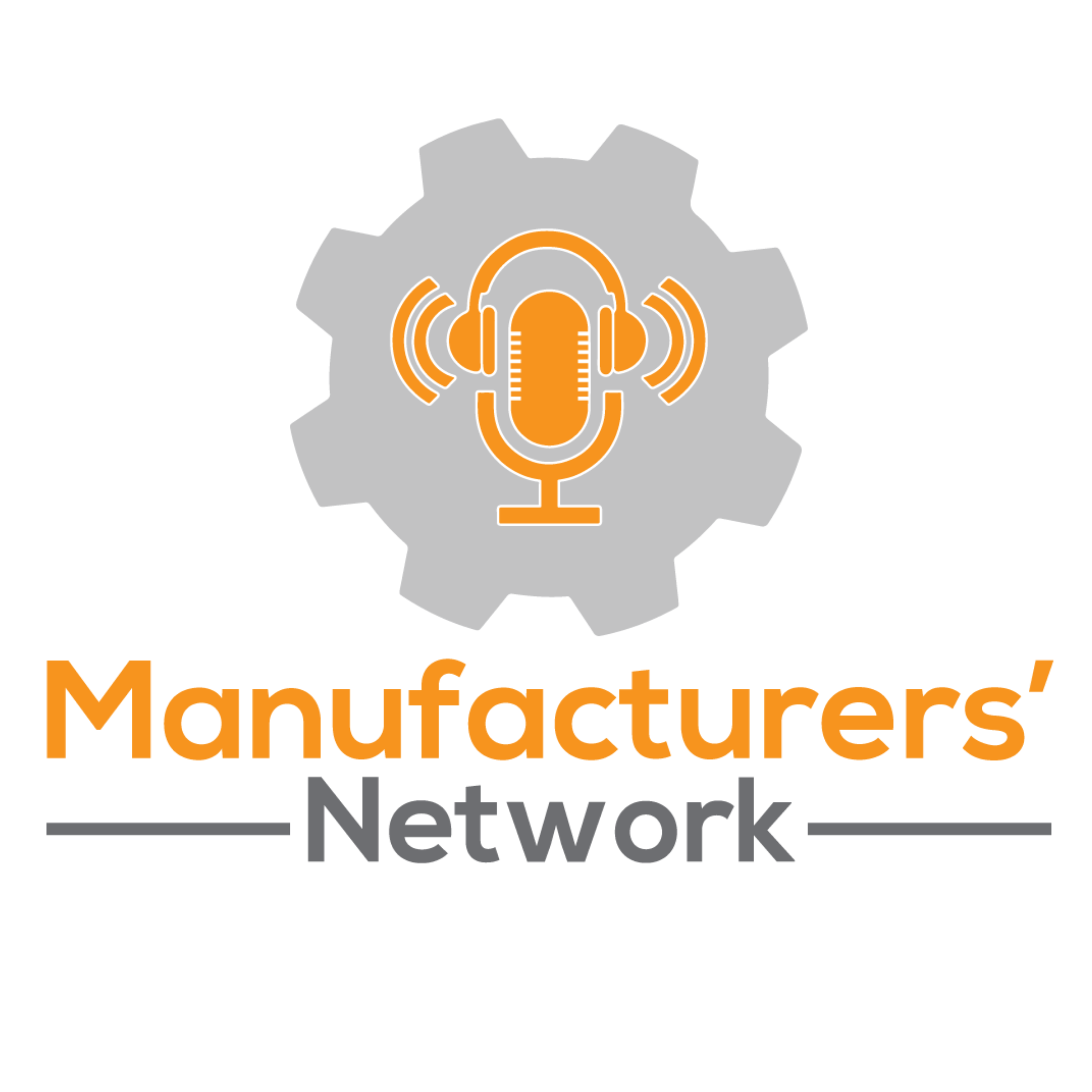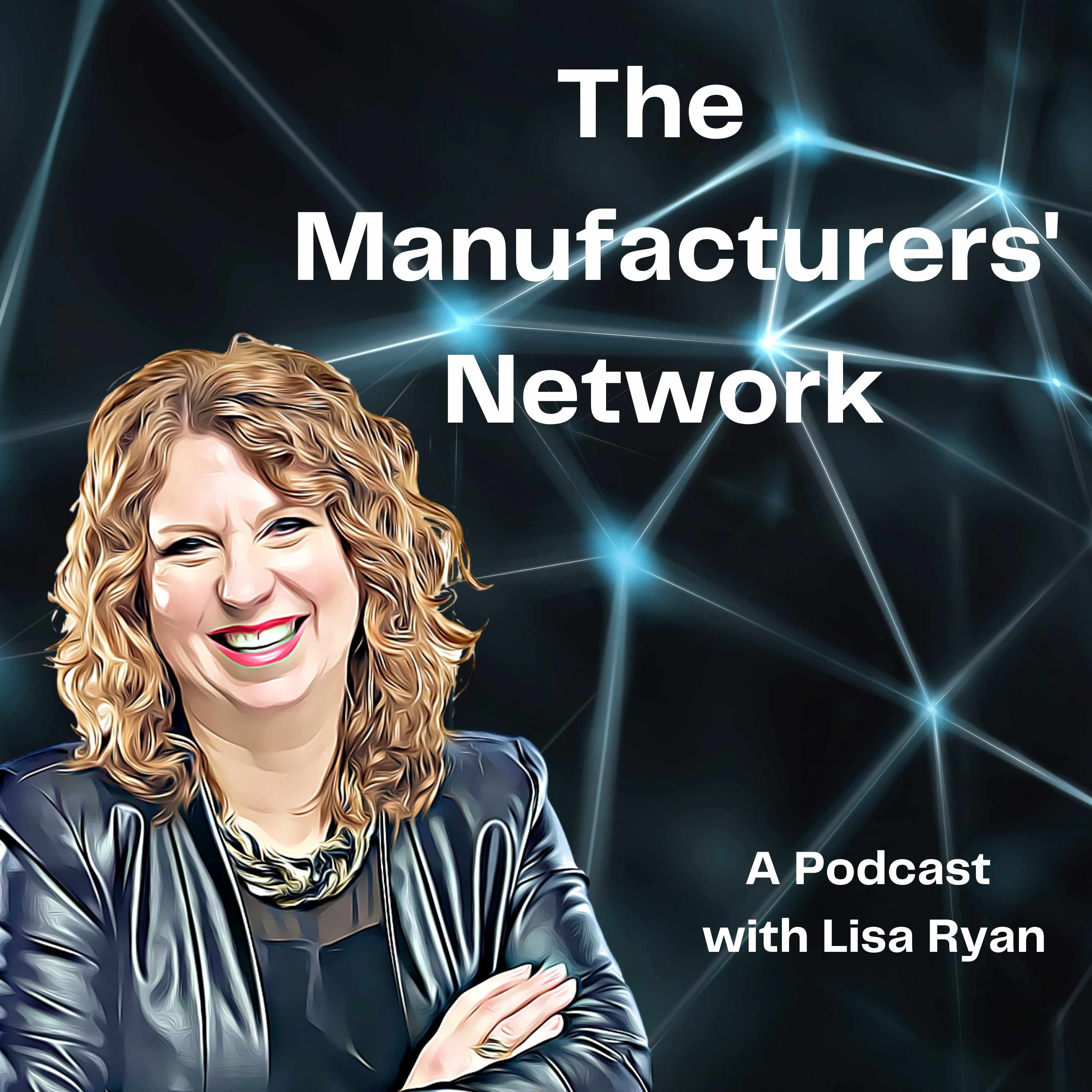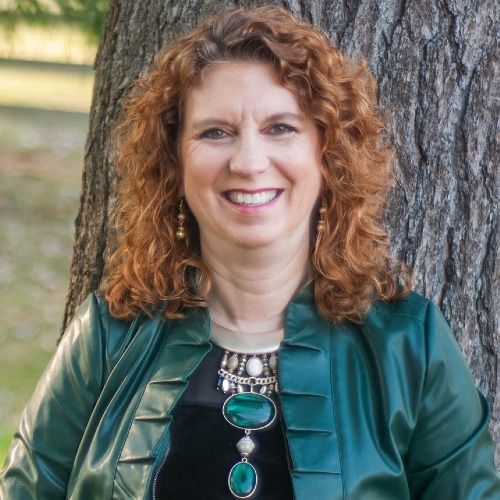Exploring the Flexible Scheduling Option for Employees in Manufacturing with Jesika Young
Connect with Jesika Young:
Email: jesika@cimtechmachine.com
LinkedIn: https://www.linkedin.com/in/jesikayoung/
Show Transcript:
Lisa Ryan: Hey, it's Lisa Ryan. Welcome to this episode of the Manufacturers Network Podcast. I'm excited to introduce you to today's guest Jesika Young. Jesika is President, CEO, and co-owner of three manufacturing companies Cimtech, Axis, and Action.
Most importantly, Jesika is a team member first. Jesika believes strongly in putting the team above all else. She was named "woman to watch" by Business First as she made a move to watch and then acquiring a 43-year-old manufacturing company in the heart of southern Indiana.
Cimtech Incorporated was named a top 10 precision manufacturer. In her short two years of manufacturing, Jesika has been named among the most influential women in manufacturing by Influential Women in Manufacturing. Jesika, welcome to the show. It's great to have you here.
Jesika Young: Thank you so much, Lisa. It's good to be with you again. Yeah.
Lisa Ryan: So you have such a fascinating background and kind of your journey regarding how you got and ended up in manufacturing. So why don't you share with us just a little bit about what brought you here?
Jesika Young: So it's quite a peculiar roadmap that brought me into manufacturing, but I grew up in manufacturing. My father was an administrator for the sheet metal and construction trade, so I love being around fabricators and watching things being built. But I became an accidental banker and am now retired or, as they say, recovering commercial banker for ten years.
In July of 2018, my partner and I made the leap into entrepreneurship and ownership in purchasing a 43-year-old manufacturing company. So a lot of my clients were manufacturers, and so it was a good fit.
Lisa Ryan: And so walking into the plant for the first time, a 43-year-old company, as not only the new owner but a younger woman walking in without a whole lot of manufacturing background. How was that, and then how did you learn and start to transform the culture over there?
Jesika Young: Certainly, the question was, who is this, who's this chick, and what is she doing in here. I had to take a step back and realize that our average tenure of teammates was 20 years. Certainly, I knew my value wasn't how to operate a CNC machine or how to weld. I didn't have that business experience. And so to take a step back and not come in in an old hierarchy type of manner, but as a teammate. We've had this philosophy that no one person is above or below the team. I was helping in assembly and trained on the fork trucks - and so truly just learning from each team member.
Secondly, we want to make sure that they knew the importance of communication and collaboration. Communication is one of the easiest things that you can do, so communicating our goals and objectives, communicating our why or intent with why we purchased the company. Communicating that we wanted to grow and it was they are a vital part of the team to help us grow and then that collaboration piece which is again. They've got a lot of experience. So when there are ideas or problems, bring team members to the table to collaborate and then communicate the findings.
Lisa Ryan: And it's funny because you and I have had several conversations. And every time I said "employees," you corrected me and said "team members." On the one hand, it's such an easy change for people to make in their perspective of how they're looking at the people who work for them and with them.
But share a little bit about why the whole concept of team members and being a part of a team is essential to you and how it's worked for you.
Jesika Young: My partner and I grew up in sports. If you asked my 19-year-old self or even my 21-year-old self, I wanted to be a sports broadcaster, but there was always a love for sports, and being a teammate truly meant that you were with people. You had a common goal that we're trying to accomplish. That nobody was working for one another.
And we believe that the word employee means that you work for someone, or there's a particular hierarchy that it's a chain of command and, it's very rigid so we, we found that very important that we're in this together where failure is not an option. There's a lot of shit happening outside of our four walls like, let's be a team. Let's be a family and so team member first within any of our titles within the company.
It's team member above all else, so then any question or problem arises, you ask yourself, what impact is it going to have on the team as a whole. So when you make the team, the center, we believe that everything else will fall into place.
So you're right. When you asked the first question, "How many employees do you have?" and I said, "Zero," and you were like, we don't have any, we have team members.
Lisa Ryan: So when you first came into the plant and started making that transition from people feeling like employees to people feeling like team members - What were some of the things you did to let people know that this just wasn't a thing, this was from the heart. Something that you wanted to change within the culture and make them feel a part of the team.
Jesika Young: Well, we certainly didn't say that out loud. It wasn't that we communicated, "Hey, nobody's an employee anymore; we're team members." We felt that we needed to lead by example and that actions spoke louder than words. So we made a few changes.
Lisa Ryan: The first change was very simple.
Jesika Young: Anyone with an email address - we changed their title on their business cards and their email signature line to team members first, ourselves included. And I remember very distinctly many vendors wanting to come in and meet with us, and they'd say, Oh, you're the new owner. So we said no, we're team members. We're, we're a family-owned and team-ran or team-operated company.
And a lot of the vendors are like, What do you mean, and we're like, no, we're, we're in this together. We're team members. I think those small actions certainly helped showcase to the team. And then we made additional changes like there was the employee handbook. We completely revamped it, and the word "employee" was marked out of the handbook. If we onboard new team members, it truly says team member first and then machinist team member welder.
Team members, CFO, and so that truly has resonated and trickled out. We changed the name of uniforms to logo wear. That's not a mandate, but something as simple as that. Every team member wears our logo wear, and they're proud of it. And they're wearing it out and about, and they're part of the team.
Each year, we also do a celebratory team member and families, and our extended team, our vendors, and suppliers come to a party. Of course, with covid this year, we've had to postpone our team member outing.
But we send the tickets to their houses, and it says, "team member" in their family name. So it's the actions, I believe that that showcases that.
Lisa Ryan: Well, and there are so many cool things you do to help your employees and get them involved and create those connections with the different ideas you've brought in over the last couple of years. So what are some of your favorites that you've done? Share a little bit about them because I know you didn't spend a lot of money. It's just this creativity that you have that you bring with you and get people involved.
Jesika Young: One of my favorite traditions that resonate with us is our "caught you being awesome" cards. So we have sets of stationery that are just blank, and each team member has access to at any time a team member goes above and beyond. They will sign a card a contribution awesome card and explain what they've done that caught them being awesome and thank them for being a great team member. Then they sign it from the team. And so it's really neat from a constant morale boost to feel appreciated - not just from an owner or a supervisor, but from your teammates. We have once a month, our team member lunches. That's another favorite tradition of ours whether they're smoking meat or we're doing grilling hamburgers and hot dogs. We've got one coming up next Monday.
And so it's just, it's fun too Everybody's communicating and, oh, this will go well with this or Oh I like these kinds of fixes with my chili. Those are a few of my absolute favorites.
Still, I would be remiss not to share another one that, as you mentioned, truly wasn't a cost but provides such culture and it was brought on by collaboration with every one of our teammates. That's our flex schedule. It's a very odd concept to comprehend or think of as a manufacturer, but from a flexible scheduling standpoint, because life happens, things happen. You might oversleep, you might be a few minutes late.
And so, being on a points program is not something that we wanted to implement here. There's no balance anymore. It's a work-life blend and so flex time, each team member can choose their start time and, again within some parameters, select their lunch schedule.
Maybe they got a doctor's appointment that they need to take during a lunch break - so it's going to be two hours—but then allowing them to also make up that time on the backside of it.
So again, all we asked for is communication. And so it's really neat to walk around and see somebody is running out to a doctor's appointment or they're going to take their significant other out to lunch and then they'll yell out "yay, flextime!" or if they want to sleep in, they can also make up that time on the backside. It was magical to watch when the concept of flex time rolled out. We, of course, had some objections. What if so and so doesn't want to start at this time or wants to start earlier than this. I'm the programmer, and they're running the production and so on and so forth. I said, "Well, let's lay out everything that could go wrong. And then let's work back solutions to see how it could go right. When we rolled it out to the rest of the team, that was the final product that the parameters that we set in place with it. We've been doing that for a little over a year and a half now and it's been fantastic. The productivity has gone up and our teammates love it. Certainly, it's been a great attraction to other people wanting to join the team too.
Lisa Ryan: Absolutely. So as the people are listening to this podcast and their heads are exploding. Great. Now because they're saying, What do you mean flex time in manufacturing. What are the parameters? What's the communication? How do you cover from shift to shift to ensure that there's somebody there to run the machine that needs to be run?
Jesika Young: Well, so that the parameters that we laid out more specific to we do run two shifts, we have two plants and two different locations. So within each plant and within each shift, there were parameters. So, for example, we've got a start time from anywhere, beginning at 5:30 am to 8 am on a first shift at our headquarter location, and then the requirement from a lunch perspective is that we felt that in by law that they need at least a 30 minutes to reset their mind. Now that's not to cap them at 30 minutes because some people like a 45-minute lunch, some people like an hour lunch. So laying out those parameters and then we imposed some of that crossover to the second shift and then very similarly on second shift. But as opposed to having a start time of 5:30 am or second shift had eight o'clock hard close time. So what that ended up creating was the crossover and blending of the two shifts.
So no longer the team divide of, oh, well, your first shift and your second shift or this is when the second shift comes in. It was nice to see our team on both first and second working together to communicate what was going on, what projects needed to move forward, and so on and so forth.
Lisa Ryan: Yeah, it sounds like you've done well as far as the communication within the plant, and the employees have benefited from that. And it sounds like they're doing pretty well communicating.
Jesika Young: Absolutely. And like I said before, we're a team, above all else, and so if somebody may accidentally sleep in and not call and their teammates are worried like, Oh, well, usually in by now, let's make sure that they're okay. And so that's been nice to see amongst the team also.
Lisa Ryan: So, what are some of the things that are keeping you up at night now?
Jesika Young: Supply chain. Say, that's probably the biggest one. But in all seriousness, the supply chain certainly has been disrupted during a pandemic, and that makes it extremely difficult to plan. The mindset that we've taken, and again, I tried to remain very positive versus focusing on the negative, is that we've now plan for the worst-case scenario. Then we over-communicate that to our customers. So we are always now in communication with our supply chain, our vendors, our suppliers. As a customer, I'm sure from our customers' perspective it found out something happened at the 11th hour. So we are always in this constant state of, "this is what we're seeing . This is what we've been told." This is the worst-case scenario and then working back from there.
Lisa Ryan: When it comes to networking with other manufacturers and creating that network, what would you would information or insights helpful to you from your manufacturing and related industries colleagues?
Jesika Young: Yes, so networking with manufacturers is undoubtedly something that I find great value in women, and I'm part of the metro manufacturing alliance. A lot of the value add that I see, they're not just for myself, but for our teammates is having peer roundtables or peer connections and now that we're in this virtual platform. It does make it a lot nicer because our operations manager may have certain obstacles would be able to talk those through or there may be ways to avoid making some of the mistakes they had made. We also celebrate successes because, let's face it, after coming out of 2020, we certainly spend a lot of time celebrating even the smallest of victories.
But you asked what keeps me up at night and the supply chain, and that was certainly something within our networking group that we've worked to address. As manufacturers, we said, Okay, these are what we see from materials down to your outside services. What are ways that we can work together to overcome these? It's been magical to see larger corporations providing some insight, or even the smaller industries are the smaller businesses being able to pull together and exercise their strength to joining us.
Lisa Ryan: What if somebody wanted to reach out and learn from you to get some of your insights? Where do you excel, or where would you most be able to help others?
Jesika Young: I would say my strengths lie in the connections are connectivity so if I don't know someone that could help. Then I'm going to ask my network to see who we could connect them to. So I think connectivity would undoubtedly be a strength. So if there are certain obstacles that you're encountering or facing or want to, that an idea through if it's not something that I've seen or done before, you're reaching out to my connections, making those available to the network.
Lisa Ryan: What is your best tip if somebody's listening to this podcast today and want to do some of the interesting things you've done with your culture over there. What would be a good start?
Jesika Young: A good start is very simple, and that's to appreciate your teammates. I think showing appreciation, telling your teammates that you appreciate them, showing the appreciation. Whether that's in a "caught you being awesome" card or understanding your teammates' favorites and surprising them with their favorite Coke or drink and just little acts of kindness and appreciation go certainly a long way. One effortless step that we took here and how they made it tradition is sending cards to the teammates home from the team here so Thanksgiving Day cards. Appreciate showing the appreciation at Thanksgiving. Also, Mother's Day and Father's Day sending the family of the team member. Thank you for sharing your father and mother with us. So those certainly have gone a long way too.
Lisa Ryan: Well, Jesika, as always. It's such a pleasure to catch up with you again. Thank you so much for being on the show today.
Jesika Young: Thank you so much for having me.
Lisa Ryan: So I'm Lisa Ryan, and this is the Manufacturers' Network Podcast. See you next time.


